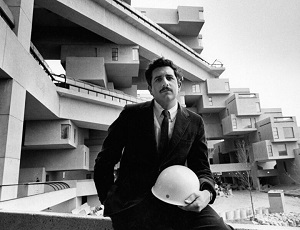 Tuesday, April 23, 2024
Tuesday, April 23, 2024  Tuesday, April 23, 2024
Tuesday, April 23, 2024 
As reported on CBC News, Habitat 67, a seemingly bizarre and innovative collection of modular apartments overlooking the St. Lawrence River, has been around for more than 50 years. Moshe Safdie still can’t believe it exists.
“It’s like a fairy tale. How did I ever get it built?” said Safdie, 81. The Israeli-Canadian architect designed the project, and was in his 20s when it opened in 1967.
Built for Expo 67 in Montreal’s Cité du Havre neighbourhood, not far from the Old Port, its cubist design, floor-to-ceiling windows and rooftop gardens were heralded as a new way to build urban housing.
“The objective was to rethink the apartment building,” said Safdie.
Habitat turned Safdie into an overnight success. He made the cover of Newsweek — a photo of him and his chef-d’oeuvre appeared below a headline that read: “The shape of things to come.”
There were plans to build similar buildings in New York City, Jerusalem and Puerto Rico, but they were never built, mostly because of the cost. Habitat was built as a one-off for Expo 67 with government money, unlike regular apartment towers which usally paid for by private investors looking to turn a profit.
Now, five decades later, Safdie is building versions of his iconic buildings once again — in Asia.
Hans Ibelings, an architecture historian at the University of Toronto, said it’s not unusual for ideas in architecture to take decades to take hold.
“I believe that when something is new in architecture, it’s seen as a novelty,” he explained.
“When it’s 30, 40 years old, and if it managed to survive … then it can become a classic and you can see this clearly with Habitat.”
To understand why the Habitat style is experiencing a renaissance, it’s worth looking at what made it a unique building in the first place.